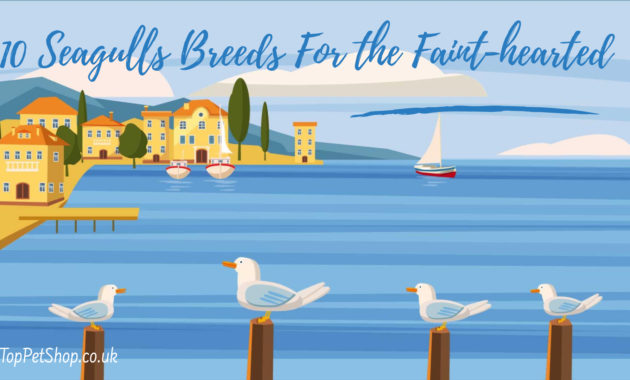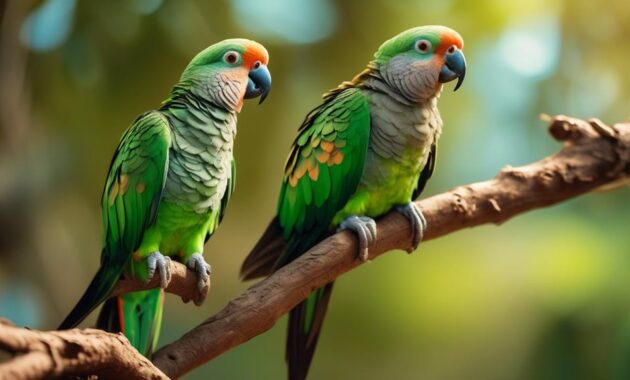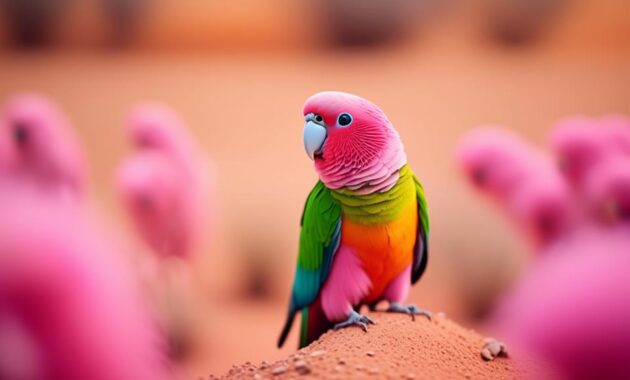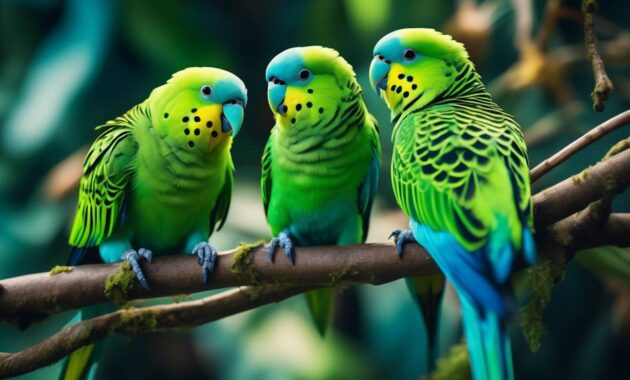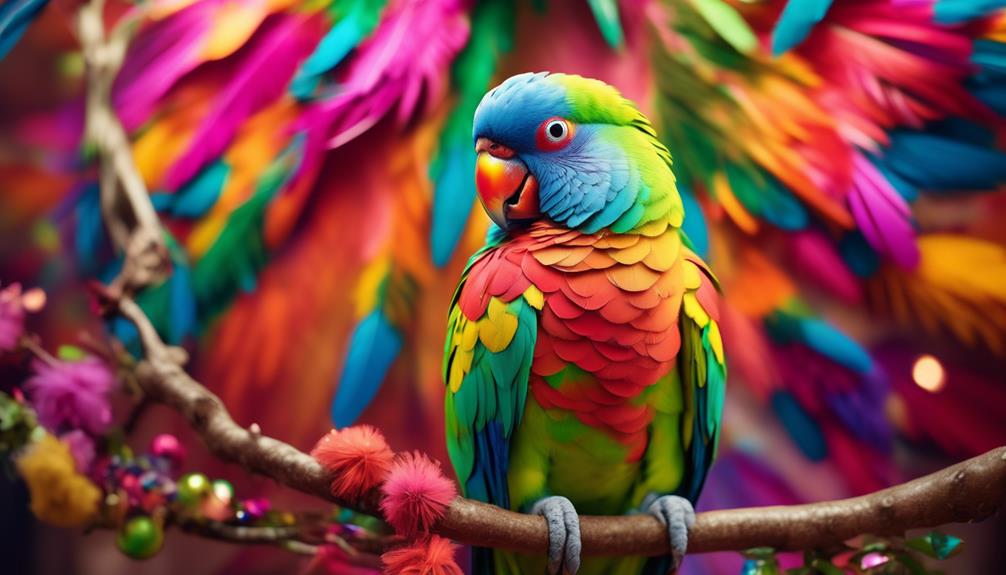
Did you know that the Princess Parrot possesses a secret world of vibrant colors and enchanting traits that are waiting to be explored?
This stunning bird species, known for its elegant appearance and social nature, holds a captivating allure that is sure to pique your curiosity.
From its impressive size and unique color variations to its chatty personality and vocal abilities, the Princess Parrot has a wealth of wonders to offer.
But that's not all – there's still so much more to uncover about this fascinating species.
So, are you ready to embark on a journey that will reveal the vibrant world within the Princess Parrot?
Key Takeaways
- Princess Parrots are social and intelligent birds with a lifespan of around 30 years.
- They have vibrant green feathers with blue, lutino, and albino mutations, making them visually striking.
- Princess Parrots are known for their vocal abilities and can mimic sounds and even talk.
- They are native to the interior parts of Western and Central Australia and prefer habitats with sandy terrain and sparse brushy growth.
Princess Parrot Characteristics
Princess Parrots possess a range of unique characteristics that make them a fascinating bird species. These parrots are approximately 18 inches in size and have a lifespan of around 30 years. They belong to the parrot family and come in various colors, including green with details, blue, lutino, and albino mutations.
Princess Parrots are vocal creatures, known for their natural calls and ability to mimic sounds. In terms of personality, they're social, intelligent, silly, fun, and affectionate. Comparable breeds to Princess Parrots include the White Bellied Caique and Alexandrine Parakeet.
With their elegant appearance and long, tapered tail, Princess Parrots are excellent flyers and require spacious cages. They're also chatty birds with the ability to mimic and talk. Their vibrant colors include green, yellowish tones, smoky blue, pink, and blue on their rump and tail.
Size and Lifespan
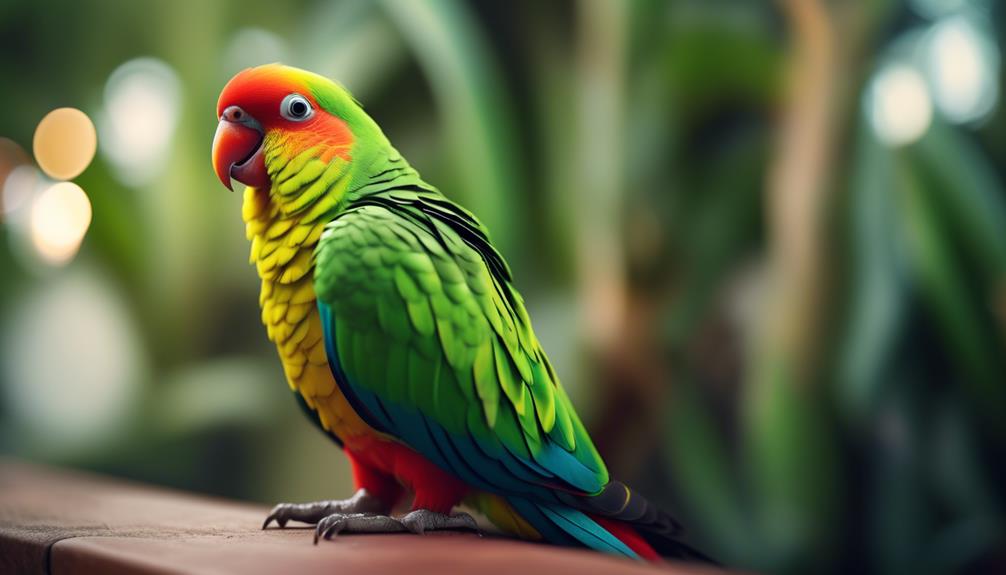
With an average size of approximately 18 inches and a lifespan of around 30 years, Princess Parrots are a captivating bird species. These vibrant creatures are known for their stunning green plumage with intricate blue, lutino, and albino mutations.
They have a social and intelligent personality, making them a delightful addition to any bird enthusiast's home. Princess Parrots are good flyers and require a spacious cage to accommodate their flight abilities. They are also chatty birds with the ability to mimic sounds and even talk.
Their elegant appearance with a long, tapered tail adds to their charm. With their size and lifespan, Princess Parrots have the potential to be a long-lasting and enchanting companion for many years to come.
Bird Species and Colors
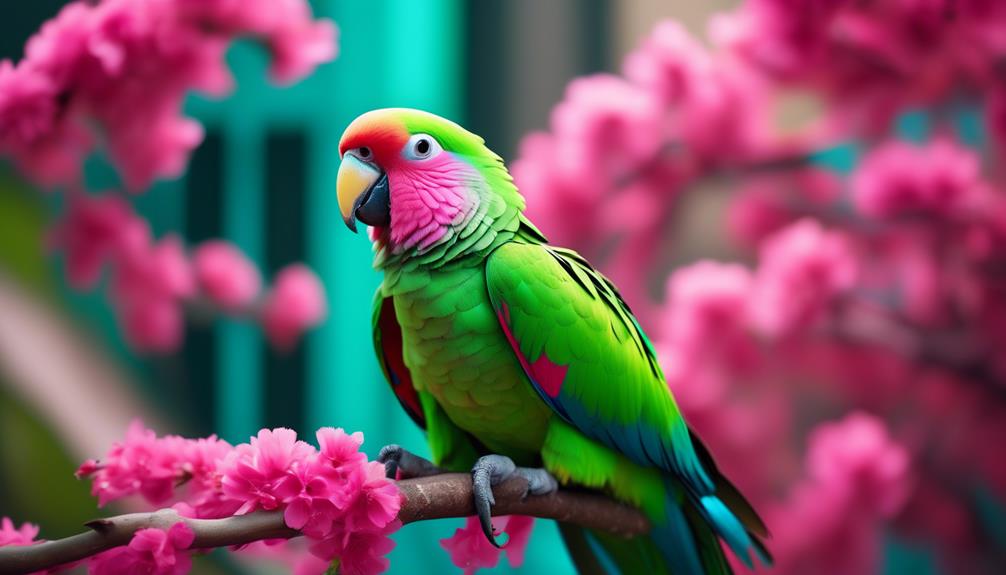
Bird enthusiasts are fascinated by the variety of bird species and their vibrant colors. When it comes to the Princess Parrot, its bird species is classified as a parrot. But what truly captivates people are its stunning colors. Here are the different colors that can be found in this exquisite bird:
- Green with details: The Princess Parrot's primary color is a beautiful shade of green, which covers most of its body. However, upon closer inspection, you'll notice intricate details that add depth and texture to its plumage.
- Blue: This bird also showcases hints of blue, which can be seen on its rump and tail. The contrasting blue against the green creates a visually striking combination.
- Mutations: In addition to the natural coloration, the Princess Parrot can also exhibit unique mutations such as lutino (yellow) and albino (white). These variations further enhance the already vibrant palette of this remarkable bird.
The Princess Parrot truly lives up to its name with its remarkable bird species and vivid colors.
Vocal Abilities and Personality
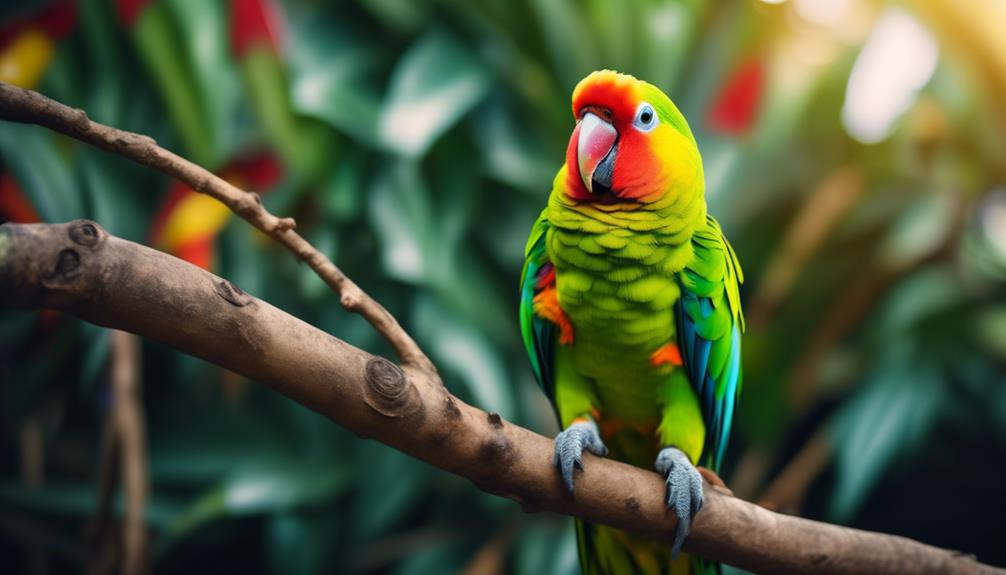
When exploring the captivating world of the Princess Parrot, one can't help but be intrigued by its vocal abilities and vibrant personality. These parrots are known for their chatty nature and impressive ability to mimic and talk. They've a wide range of natural calls, which they use to communicate with other parrots and express their emotions.
Additionally, Princess Parrots have a knack for mimicking sounds from their environment, such as human speech or the ringing of a phone. This makes them highly entertaining and interactive companions.
In terms of personality, Princess Parrots are social, intelligent, and affectionate. They enjoy the company of their human caretakers and thrive on mental stimulation and social interaction.
With their silly and fun-loving nature, Princess Parrots are sure to bring joy and laughter into your life.
Comparison With Similar Breeds
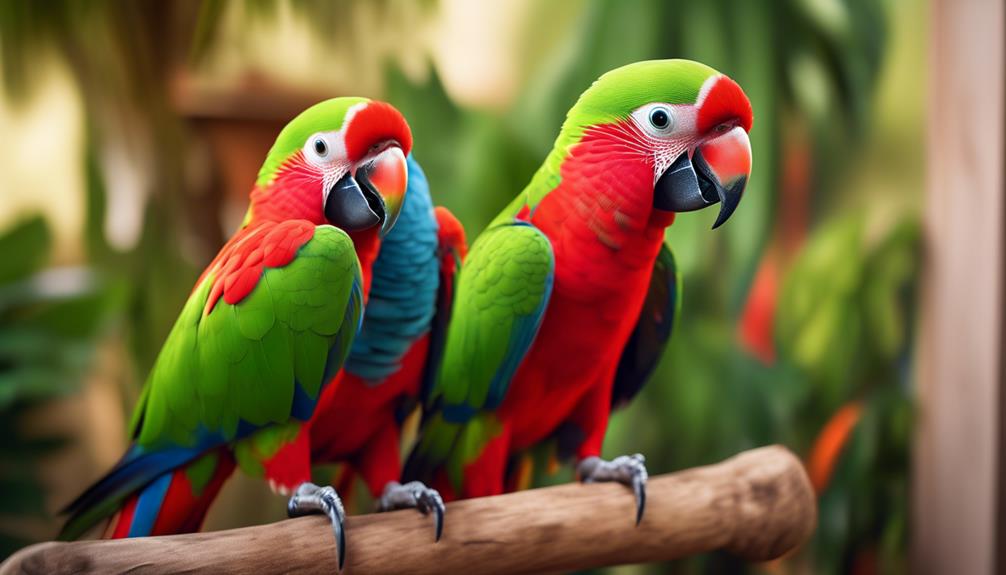
Princess Parrots can be compared to other breeds such as the White Bellied Caique and Alexandrine Parakeet in terms of their characteristics and personality.
- White Bellied Caique
- Characteristics: Playful, energetic, and mischievous
- Personality: Social and friendly, known for their clownish behavior
- Similarities to Princess Parrots: Both breeds are social and enjoy interacting with their owners, exhibiting playful and entertaining behaviors.
- Alexandrine Parakeet
- Characteristics: Large size, strong beak, and long tail
- Personality: Intelligent, independent, and sometimes reserved
- Similarities to Princess Parrots: Both breeds are intelligent and require mental stimulation. They can be independent at times but still form strong bonds with their owners.
- Princess Parrots, White Bellied Caiques, and Alexandrine Parakeets all share the qualities of being social, intelligent, and having distinct personalities. However, each breed has its own unique traits that make them special in their own way.
Princess Parrot Habitat
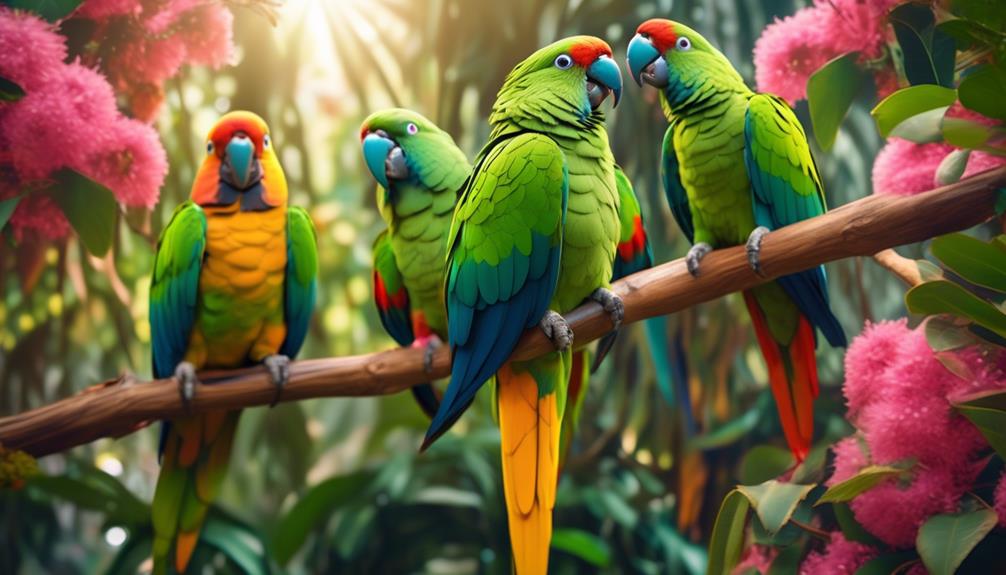
To understand the natural habitat of the Princess Parrot, let's explore the environments where these vibrant birds thrive.
The Princess Parrot is native to the interior parts of Western and Central Australia. They can be found in sandy habitats with sparse brushy growth, as well as areas with Casuarinas and Eucalyptus trees.
These birds prefer nesting close to sources of freshwater. It's estimated that there are around 7,500 Princess Parrots in the wild.
In their natural habitat, they can be seen flying gracefully with their long, tapered tails. The Princess Parrot's vibrant colors, including green, yellowish tones, smoky blue, and pink, make them a beautiful sight to behold in their native environment.
Native Region and Habitat Characteristics
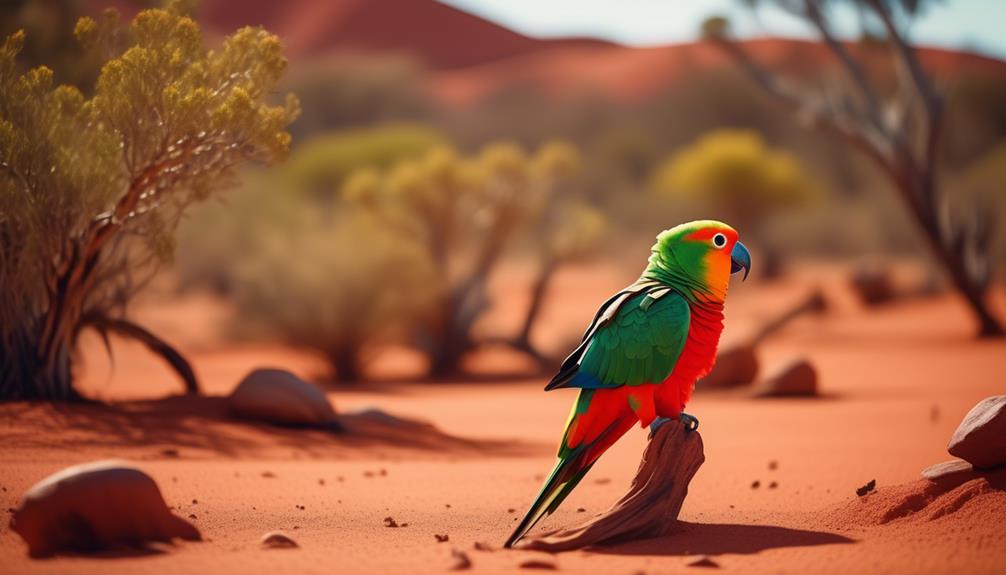
The Princess Parrot's native region and habitat characteristics reveal a unique environment where these vibrant birds thrive.
- Native Region: Interior parts of Western and Central Australia
- This includes areas such as the Gibson Desert, Great Victoria Desert, and the MacDonnell Ranges.
- These regions are characterized by arid and semi-arid climates, with hot summers and mild winters.
- The parrots are well-adapted to the harsh conditions, including limited rainfall and high temperatures.
- Habitat: Sandy habitats with sparse brushy growth, Casuarinas and Eucalyptus trees
- The parrots prefer habitats with sandy soils, as it allows for easy digging of nesting burrows.
- The sparse brushy growth provides cover and foraging opportunities for the birds.
- The presence of Casuarinas and Eucalyptus trees provides a source of food, as the parrots feed on their seeds and fruits.
- Nesting preference: Close to freshwater sources
- The parrots prefer to nest in areas close to freshwater sources, such as rivers and waterholes.
- This ensures a reliable water supply for both the adults and their chicks.
- The availability of water also attracts other bird species, creating a diverse ecosystem.
Nesting Preferences and Wild Population
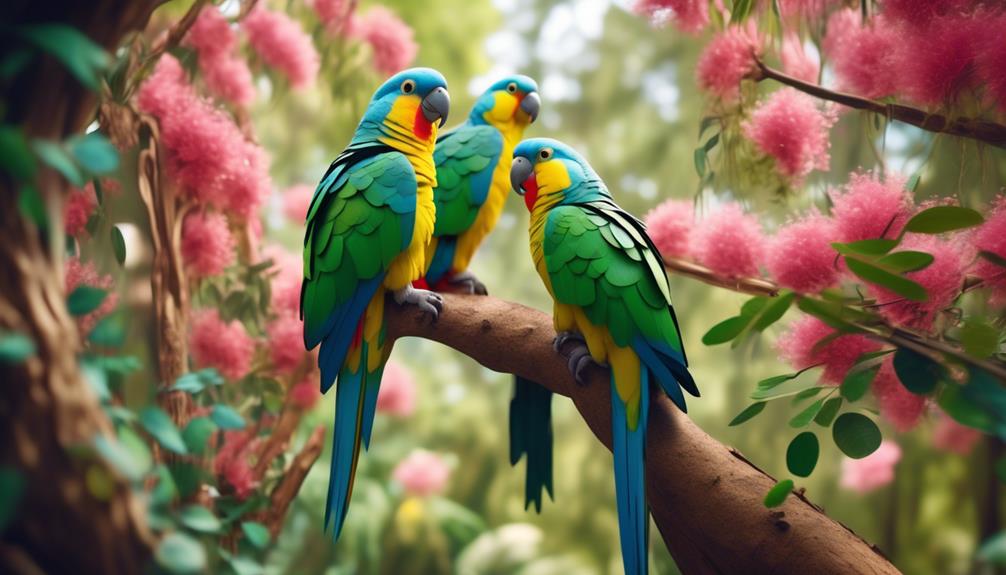
Nesting preferences and the wild population of Princess Parrots reveal important insights into their reproductive behavior and overall conservation status.
These parrots prefer to nest close to freshwater sources, which are essential for their survival. By choosing these locations, they ensure easy access to water for themselves and their young. Additionally, nesting near water sources may provide them with a more abundant food supply, as many insects and other small organisms are attracted to these areas.
As for the wild population, it's estimated that there are around 7,500 Princess Parrots in existence. This number is crucial for conservation efforts, as it helps researchers understand the current population size and monitor any changes over time.
Princess Parrot Description
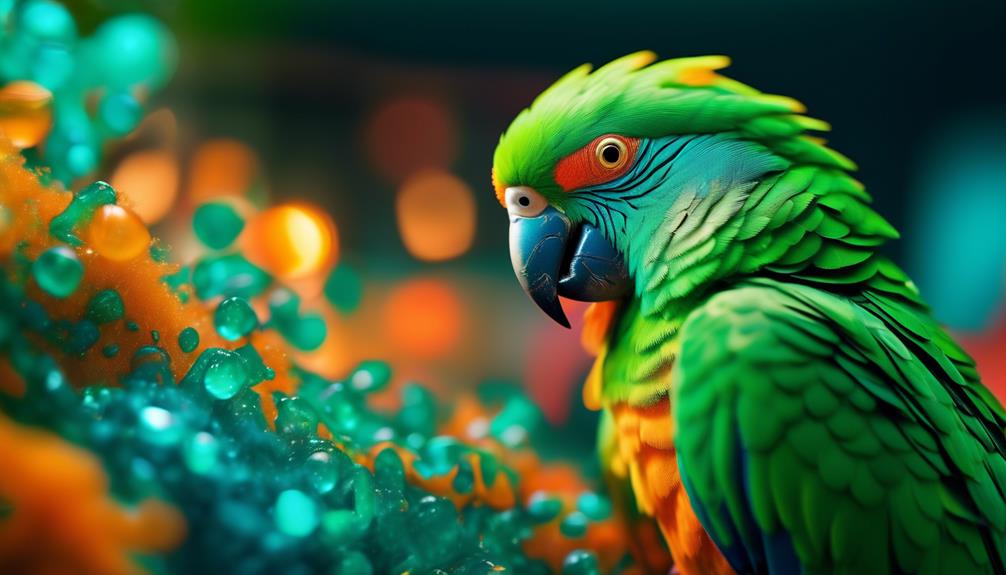
With their elegant appearance and vibrant colors, Princess Parrots are a captivating species of parrots native to the interior parts of Western and Central Australia. These stunning birds have a long, tapered tail and are good flyers, requiring a spacious cage to accommodate their flight abilities.
They're chatty creatures with the ability to mimic and talk. Princess Parrots display a range of colors, including green with yellowish tones, smoky blue, pink, and blue on their rump and tail.
In terms of their habitat, they prefer sandy environments with sparse brushy growth, Casuarinas and Eucalyptus trees, and nesting close to freshwater sources.
With a wild population estimate of around 7500 birds, Princess Parrots are a unique and enchanting species to discover.
Elegant Appearance and Flight Abilities
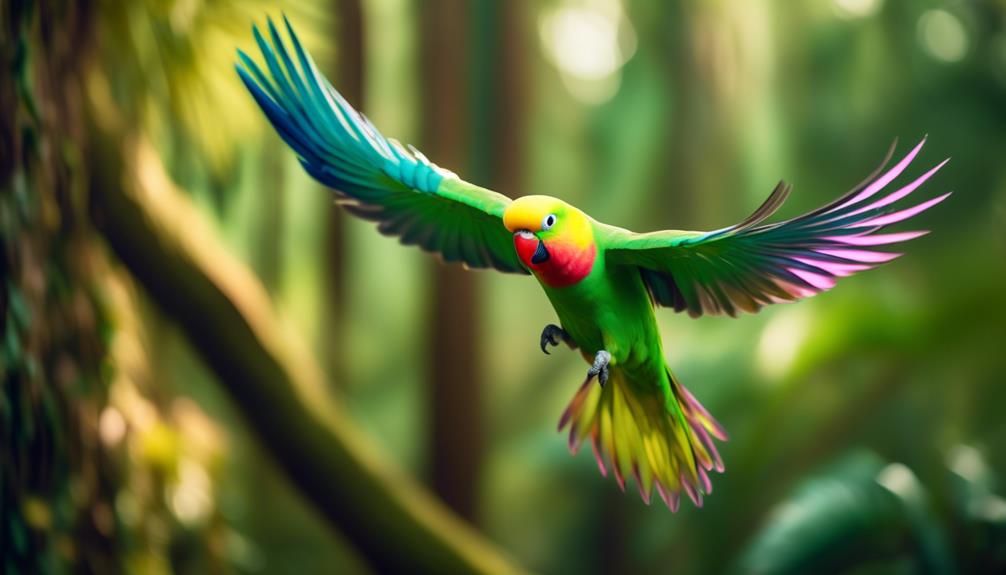
As we move on to discussing the elegant appearance and flight abilities of Princess Parrots, get ready to be amazed by their stunning features and impressive flying skills.
These parrots have an elegant appearance with their long, tapered tail and vibrant colors. Their feathers display shades of green, yellowish tones, smoky blue, pink, and blue on their rump and tail.
When it comes to flying, Princess Parrots are good flyers and require a spacious cage to accommodate their flight abilities. They're agile and swift in the air, showcasing their exceptional flying skills. Watching them soar through the sky is truly a sight to behold.
The combination of their elegant appearance and remarkable flight abilities make Princess Parrots a truly captivating species.
Chatty Speech and Color Variations
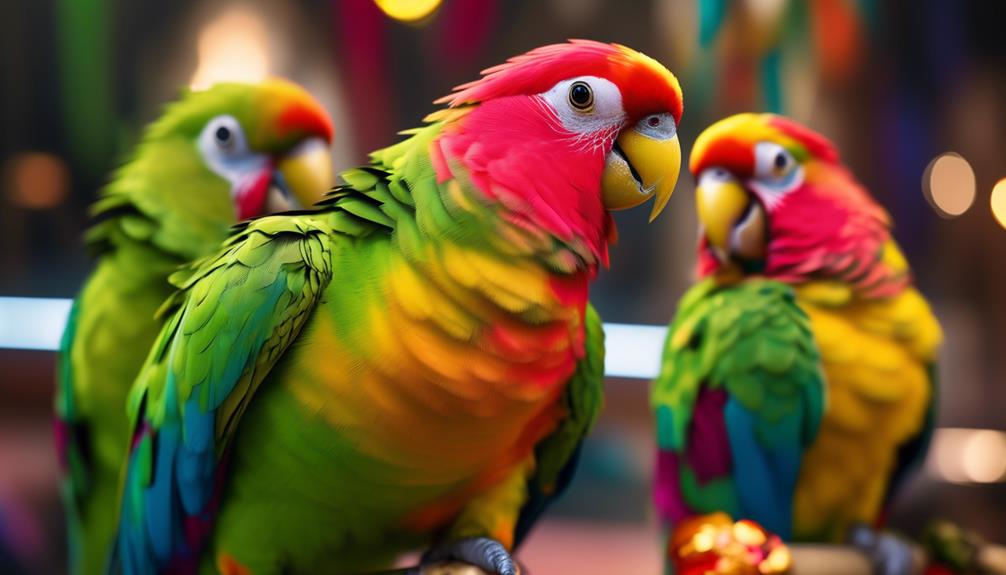
Have you ever wondered about the chatty speech and mesmerizing color variations of Princess Parrots? These beautiful birds aren't only known for their vibrant appearance but also for their ability to mimic and talk.
Here are some interesting facts about their speech and color variations:
- Chatty Speech:
- Princess Parrots are highly vocal and expressive birds.
- They've natural calls that they use for communication.
- With proper training, they can also learn to mimic sounds and even talk.
- Color Variations:
- The natural coloration of Princess Parrots is predominantly green with intricate details.
- However, they also come in different mutations, such as blue, lutino, and albino.
- These variations add even more visual appeal to their already mesmerizing appearance.
With their chatty nature and stunning color variations, Princess Parrots are truly captivating creatures that bring joy and beauty to any setting.
German Shepherd History
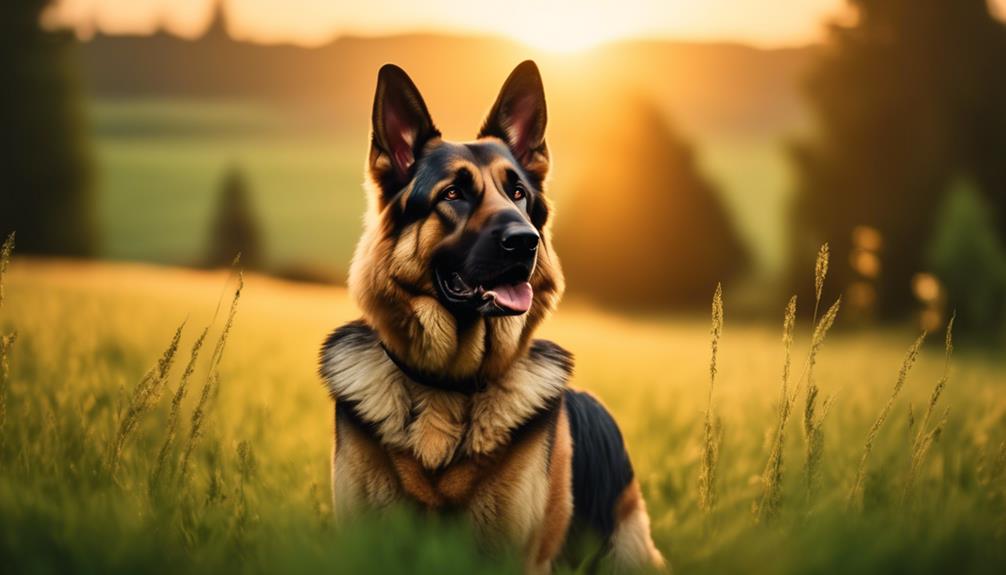
Did you know that the fascinating history of German Shepherds traces back to the 19th century, when efforts to standardize dog breeds resulted in their development?
Originally, German Shepherds were evolved from dogs used for shepherding, specifically for rounding up sheep and protecting flocks. Their strong and swift bodies made them ideal for these tasks.
Over time, German Shepherds gained popularity and are now widely recognized as a breed. They're highly sought after for roles such as police, military, and search and rescue. Additionally, they're in high demand as family pets due to their loyalty and devotion.
Despite being a relatively young breed, approximately 200 years old, German Shepherds are known for their excellent shepherding abilities, intelligence, and trainability.
Development and Evolution
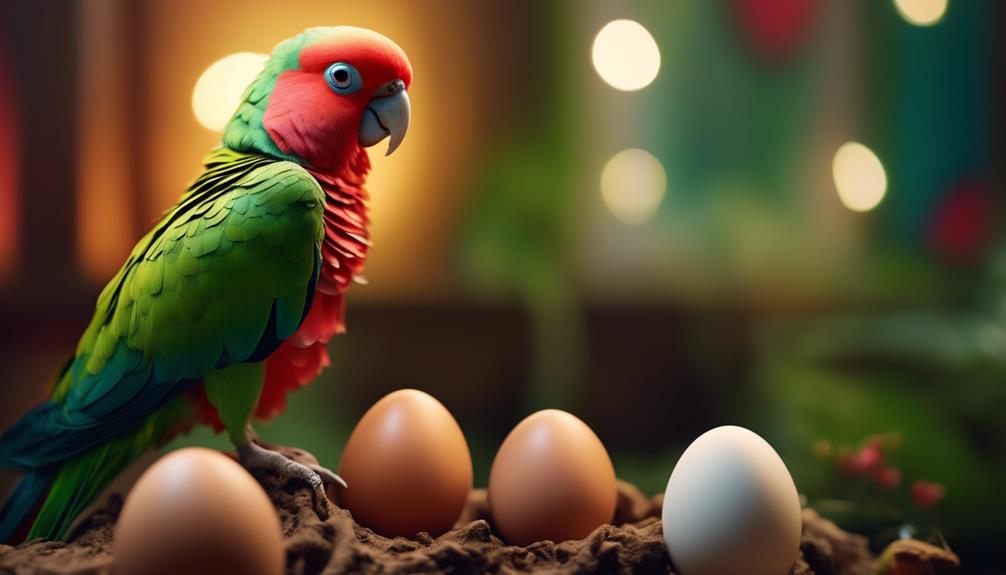
German Shepherds have undergone significant development and evolution since their origins in the 19th century. Here are three key aspects of their development and evolution:
- Breed Standardization
- Efforts were made in the 19th century to standardize dog breeds, including the German Shepherd.
- Breed clubs and organizations played a crucial role in establishing and preserving the breed's characteristics.
- Selective breeding was employed to enhance specific traits like intelligence, agility, and loyalty.
- Working Dog Origins
- German Shepherds were initially bred for shepherding purposes, such as rounding up sheep and protecting flocks.
- Their strong and swift bodies made them well-suited for these tasks.
- Over time, their intelligence and trainability led to their use in various working roles, including police, military, and search and rescue.
- Popularity and Family Pet Demand
- German Shepherds are now widely recognized and highly popular.
- Their loyalty and devotion make them desirable as family pets.
- While they're a relatively young breed, approximately 200 years old, their excellent shepherding abilities and intelligence continue to make them sought after in various fields.
Purpose and Characteristics
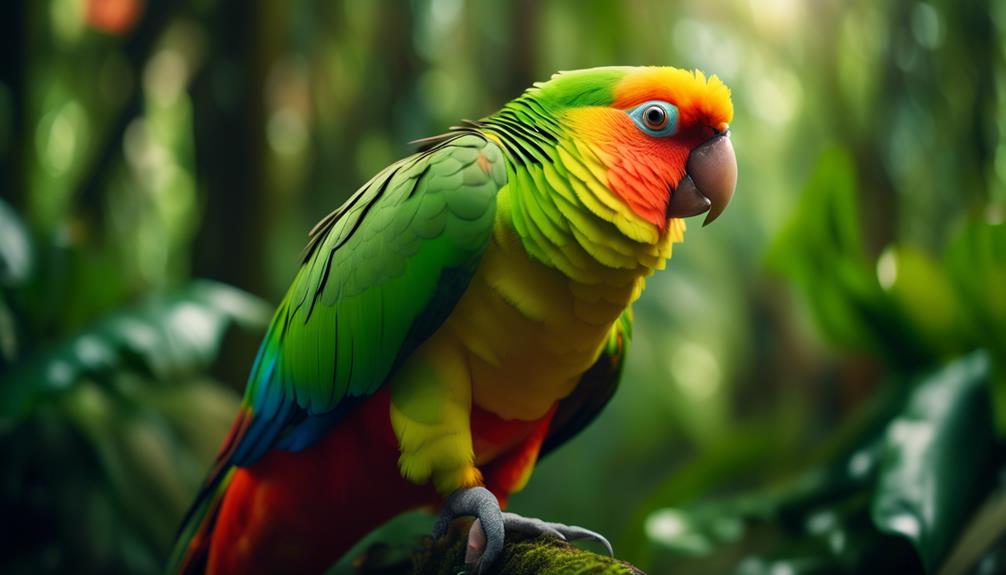
German Shepherds serve a variety of purposes and possess distinctive characteristics. These intelligent and loyal dogs are widely recognized for their roles in the police, military, and search and rescue. They're also in high demand as family pets due to their trainability and excellent shepherding abilities.
German Shepherds have a strong and swift body, making them well-suited for rounding up sheep and protecting flocks. Their loyalty and devotion are unmatched, making them an ideal companion for individuals and families. Despite being a relatively young breed, at approximately 200 years old, German Shepherds have established themselves as one of the most popular and versatile dog breeds.
Their purposeful nature and distinct characteristics make them a beloved choice for many.
Frequently Asked Questions
How Do Princess Parrots Communicate With Each Other in the Wild?
Princess parrots communicate in the wild through vocalizations, using natural calls and the ability to mimic sounds. They chat with each other, creating a lively and vibrant atmosphere in their habitat.
What Is the Significance of the Colors of Princess Parrots in Their Natural Habitat?
The colors of princess parrots in their natural habitat serve as a form of camouflage, helping them blend in with the green foliage and sandy surroundings, providing protection from predators and allowing them to thrive.
How Do Princess Parrots Build Their Nests Close to Freshwater Sources?
Princess parrots build their nests close to freshwater sources by selecting locations near rivers, lakes, or other bodies of water. They use materials like twigs, leaves, and feathers to construct their nests in these areas for easy access to water.
Are There Any Unique Behaviors or Characteristics of Princess Parrots That Set Them Apart From Other Parrot Species?
Yes, there are unique behaviors and characteristics that set Princess Parrots apart from other parrot species. They have vibrant colors, can mimic sounds, and are known for being social, intelligent, and affectionate.
How Has the German Shepherd Breed Evolved and Changed Over the Past 200 Years?
The German Shepherd breed has evolved and changed over the past 200 years through efforts to standardize dog breeds. They originated from dogs used for shepherding and are known for their strong and swift bodies.
What Makes the Princess Parrot’s World More Vibrant and Enchanting Compared to the Turquoise Parrot’s World?
The Princess Parrot’s world is vibrant and enchanting with its striking plumage and lively personality. Its curious nature leads it to discover the turquoise parrot’s world, which, while beautiful in its own right, lacks the same level of vibrant energy that the Princess Parrot’s world possesses.
Conclusion
So, there you have it! The Princess Parrot truly is a fascinating and beautiful bird species. With its elegant appearance, social nature, and vibrant color variations, it's no wonder these parrots capture our attention.
Whether you're drawn to their chatty and vocal personality or their intricate green feathers, the Princess Parrot is a true wonder of nature.
So, next time you find yourself in the interior parts of Australia, keep your eyes peeled for these magnificent birds and prepare to be amazed.

